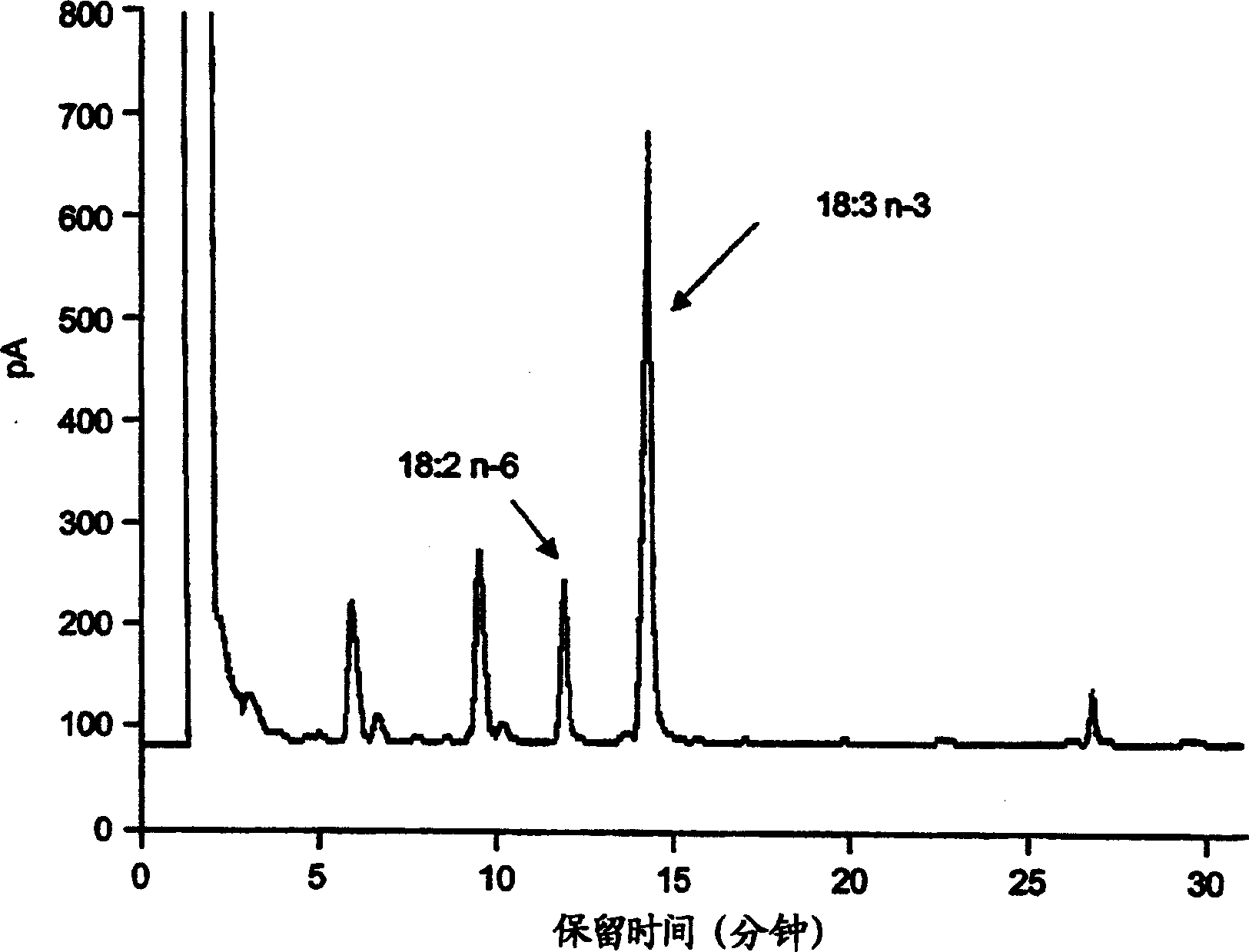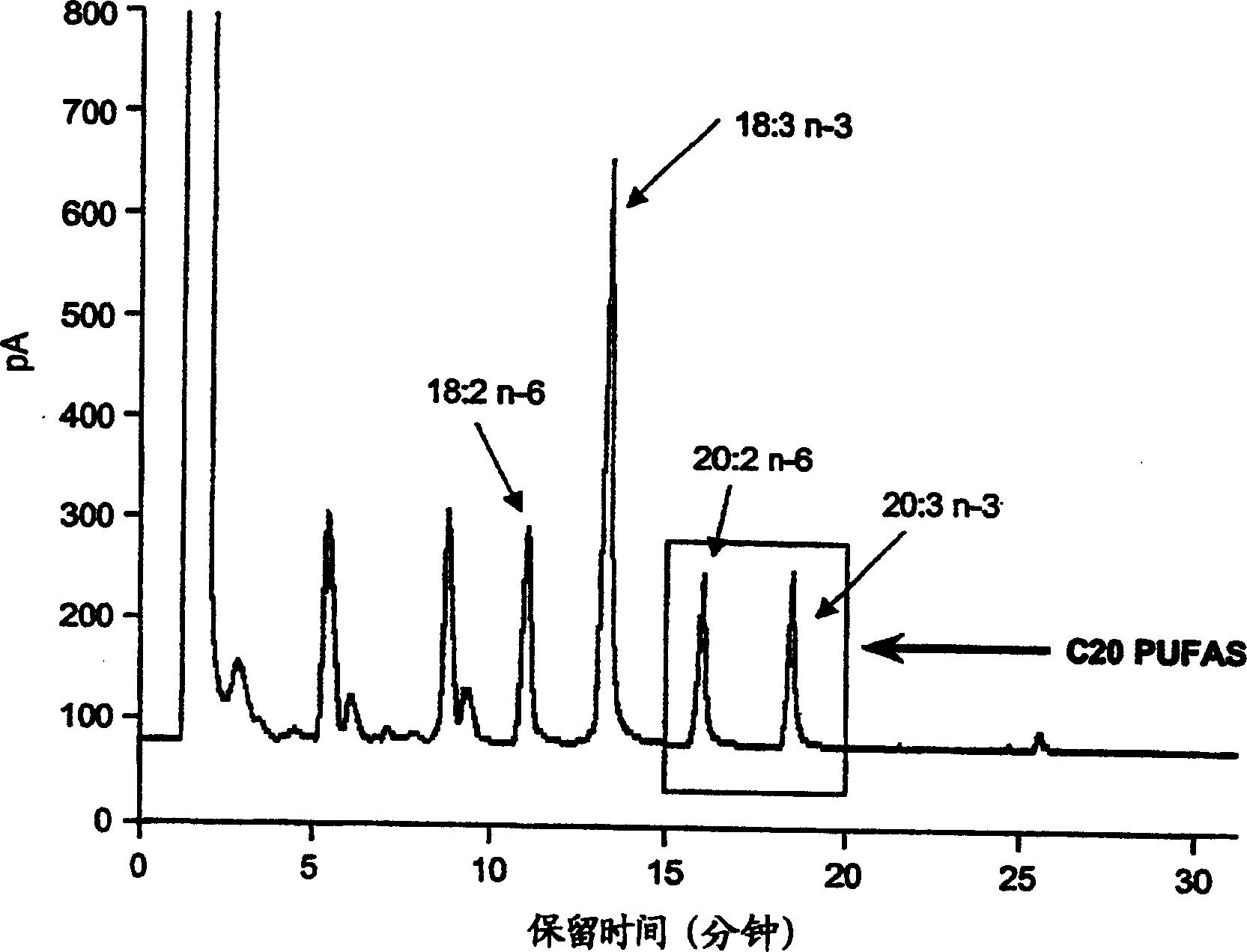Novel method for the production of polyunsaturated fatty acids
An unsaturated and desaturase technology, applied in the field of specific production of polyunsaturated omega-3 and omega-6 fatty acids, which can solve the problems of difficult and insufficient separation and characterization
- Summary
- Abstract
- Description
- Claims
- Application Information
AI Technical Summary
Problems solved by technology
Method used
Image
Examples
Embodiment 1
[0157] Example 1: General Cloning Method
[0158]Cloning methods such as restriction enzyme digestion, agarose gel electrophoresis, purification of DNA fragments, transfer of nucleic acids to nitrocellulose and Nile membranes, ligation of DNA fragments, transformation of Escherichia coli, cultivation of bacteria, and preparation of recombinant DNA Sequence analysis was performed as described by Sambrook et al. (1989) (Cold Spring Harbor Laboratory Press: ISBN 0-87969-309-6).
Embodiment 2
[0159] Example 2: Sequence Analysis of Recombinant DNA
[0160] Sequencing of the recombinant DNA molecules was carried out by the Sanger method (Sanger et al. (1977) Proc. Natl. Acad. Sci. USA74, 5463-5467) with a laser fluorescence DNA sequencer from the company ABI. The PCR-generated fragments were sequenced and checked to avoid polymerase errors in the construct to be expressed.
Embodiment 3
[0161] Example 3: Cloning of the delta-8-desaturase (=SEQ ID NO: 1 ) from Euglena pumilus
[0162] PCR amplification was performed using cDNA from Euglena minutis strain Z as template. cDNA synthesis was from total RNA extracted from cultures of E. gracilis strain Z. Unique primers for the start methionine and stop codon of Euglena delta-8-desaturase were synthesized as follows, including restriction sites.
[0163] Primer 1: EDELTA8BamF
[0164] ATGGATCCACCATGAAGTCAAAGCGCCAA
[0165] Primer 2: EDELTA8XhoR
[0166] ATCTCGAGTTATAGAGCCTTTCCCCGCGC
[0167] PCR protocol
[0168] Annealing temperature: 45°C for 1 minute
[0169] Denaturation temperature: 94°C for 1 minute
[0170] Extension temperature: 72°C for 2 minutes
[0171] Number of cycles: 30
[0172] The PCR product was separated on an agarose gel to obtain a 1270 bp fragment. The PCR fragment was cloned into pGEM-T easy vector (Promega) and the insert was sequenced. This revealed the presence of an open readin...
PUM
 Login to View More
Login to View More Abstract
Description
Claims
Application Information
 Login to View More
Login to View More - R&D
- Intellectual Property
- Life Sciences
- Materials
- Tech Scout
- Unparalleled Data Quality
- Higher Quality Content
- 60% Fewer Hallucinations
Browse by: Latest US Patents, China's latest patents, Technical Efficacy Thesaurus, Application Domain, Technology Topic, Popular Technical Reports.
© 2025 PatSnap. All rights reserved.Legal|Privacy policy|Modern Slavery Act Transparency Statement|Sitemap|About US| Contact US: help@patsnap.com



